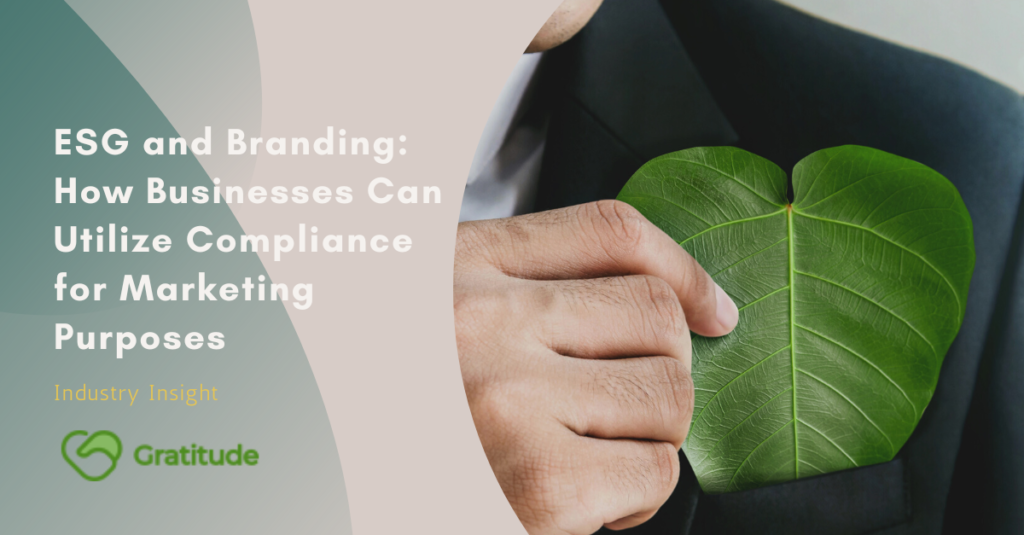
Environment, Social and Governance (ESG) are the trending subject of discussion in the business world, and the trend will continue as industries adapt to address the social and environmental changes globally. While this is especially relevant to industries like energy, construction and transportation, the need for sustainable practices and products is already beginning to affect all types of different companies and organizations.
Every year, more investors and customers want to know what brands are doing to help make the world a better place. Nearly 90% of millennials are willing to take a pay cut to work at a different company that better aligns with their values. As a result, it’s now become the norm for most companies to include sustainability as a critical component of a successful brand.
Therefore, in a new era where sustainability is key to almost any brand, how big of a role should it play in your brand’s marketing and identity? The answer depends on the nature of your corporate and brand strategies.
What constitutes ESG compliance?
Most ESG compliance requirements mandate reporting rather than direct action to address ESG concerns. However, two new regulations coming out of Germany and the European Union (EU) are quickly reshaping the landscape. In addition, many ESG compliance requirements currently focus on investment and financial institutions, which are often the initial industries to face new categories of regulations.
ESG compliance requirements can largely be broken down into four categories:
1. Requirements for organizations to disclose ESG performance and practices
2. Requirements for investors to consider ESG as part of their investment planning
3. Specific laws that touch on parts of ESG but are not focused on ESG themselves
4. Requirements for organizations to audit and manage their business practices and supply chains
The first and the fourth points are especially relevant for brands to utilize as a hook for marketing and branding because these are not only there to appease regulators but also a customer-facing elements of ESG compliance. From ESG performance and practice, customer can see, for example whether a company are reducing its carbon footprint, or whether the brands applied a fair and sustainable production facility and other good practices that ESG wanted companies to subscribe towards.
The Opportunity Derived from ESG Compliance
The kinds of activities related to ESG compliance are proven to be appealing to the younger consumer. According to a recent study, Gen Z shoppers demand sustainable retail. The majority of Generation Z shoppers prefer to buy sustainable brands, and most are willing to spend 10% more on sustainable products. Why? Because three-quarters of Gen Z consumers state that sustainability is more important to them than brand names.
Another study by Nielsen, reviewing millennials as another spectrum of ‘younger audience’ showed that 75% of Millennials are eco-conscious to the point of changing their buying habits to favor environmentally-friendly products.
From these two studies, it is clear that both Gen Z and Millenials are attracted to the goodness that ESG has to offer. Thus it is a wasted opportunity for brands to merely comply with ESG because they only wanted to tick boxes made by the regulators.
Converting Compliance to Improve Brand Image and Marketing
First and foremost, the brand needs to be as transparent as possible regarding its ESG compliance. If their claims are proven to be false, it will backfire and will hurt the brand name. The term for it is Greenwashing, and it will take a substantial amount of resources to recover the damage that has been done due to such negligence.
Therefore, each claim needs to be reaffirmed by trusted parties or better yet, a trust-less party to fortify the claims. Trust-less in this case is the blockchain technology. Blockchain offers a means to verify and record information in an immutable and decentralized ledger, thus providing a central point to refer back as a main source of truth in case the claim is challenged.
Another means that the brand needs to make sure is that these claims need to be presented in easy-to-reach and easy-to-digest ways. Such can be done by, for example, creating QR codes containing a beautiful narrative about the brand’s ESG compliance that the consumer can find in the product’s label or the companies’ marketing campaigns.
For both of those purposes, Gratitude can enable transparency for most companies with the Gratitude blockchain-powered transparency solution. Companies will be able to utilize the supply chain data that they already have, record it on the blockchain seamlessly and present it to the end user in a beautifully made display that can be easily accessed via QR codes, on product labels, or shareable links embeddable on social media or a company website.
In fact, more than 20 European companies have already started using Gratitude to tell the story of their products and to fortify their product’s claims. Gratitude are sharing their products and stories on social media, so stay tuned on Gratitude’s channels to learn more :
Website : https://more-gratitude.com
Twitter : https://www.twitter.com/more_gratitude
Linkedin : https://www.linkedin.com/company/more-gratitude
Instagram : https://www.instagram.com/more_gratitude/
Facebook : https://www.facebook.com/followgratitude
Sign up to our exclusive newsletter for special offers and latest industry insight :

